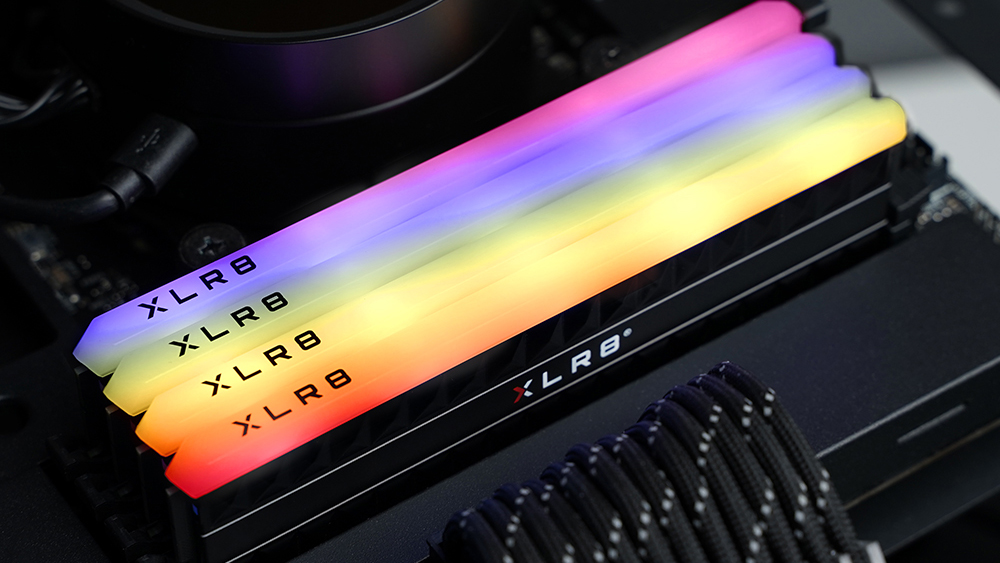DDR4 prices are now so high that vendors have decided to start making it again — manufacturers want a slice now that it's more expensive than DDR5
Manufacturers can't resist higher selling prices.

DDR4 prices have been steadily increasing in the past months due to the lack of supply. Top DRAM manufacturers Micron, Samsung, and SK hynix have announced earlier this year that they’re ceasing production of DDR4 memory by the end of 2025, with CXMT, China’s largest memory manufacturer, following suit in May. Because of this, pricing for DDR4 chips has tripled in just two months, with ComputerBase [machine translated] reporting that 8GB DDR4-3200 chip pricing is going over $5 (versus $1.75 at the end of April). The double pack variant of this DDR4 memory module now has an average price of $8.80, rising by more than 100% from $3.57. Because of this, a few smaller players have realized DDR4 is profitable once again and have decided to extend production.
For example, Taiwan-based memory maker Nanya, with its extensive DDR4 portfolio, is benefiting from these price jumps. This is especially true as it does not have LPDDR5 production and only has a limited DDR5 product line. On the other hand, bigger manufacturers like Micron are unlikely to jump on the bandwagon, especially as they’re allocating the freed-up factory lines on current and upcoming technologies, like DDR5 and HBM.
A few DDR4 module prices have lowered slightly, owing to this news. But pricing remains generally high at the moment, especially as buyers are probably still stocking up on DDR4 memory chips in anticipation of production end. We expect pricing to normalize once smaller manufacturers have gone back up to speed with producing them, but it will likely take time for them to go back to their original levels.
JEDEC first officially introduced the DDR5 standard in 2020, meaning the technology has been around for around five years by now. Intel’s latest CPUs support DDR5, and AMD’s Zen 4 processors and up only support DDR5. Aside from that, the AI boom is turning the massive demand for HBM chips into a lucrative market, pushing major players to migrate their old DDR4 lines for HBM production. These developments are slowly but surely pushing DDR4 out of the market, but because of the number of older technologies that still use it, it will likely be some time before we truly see the end of this technology.
Follow Tom's Hardware on Google News to get our up-to-date news, analysis, and reviews in your feeds. Make sure to click the Follow button.
Get Tom's Hardware's best news and in-depth reviews, straight to your inbox.

Jowi Morales is a tech enthusiast with years of experience working in the industry. He’s been writing with several tech publications since 2021, where he’s been interested in tech hardware and consumer electronics.
-
tekaryace Its been that way for ever when ddr2 came ddr was more expensive when ddr3 came ddr2 was more expensive, I have been building gaming or non gaming computers since I was 18, now 47 still making my own and everything old cost more it's always been that way. No disrespect, just my knowledge.Reply -
bit_user @apiltch , I hope you can answer this for me, because the article did not!Reply
Okay, specifically which, and what's your source on that?The article said:Because of this, a few smaller players have realized DDR4 is profitable once again and have decided to extend production.
The next paragraph mentions Nanya, but it's ambiguous whether they're being cited as one who's reversing plans to end production or just a company benefiting from the looming shortage. The prior article already cited them as benefiting from the DDR4 shortage and gave no impression they'd be winding down their DDR4 production. Therefore, I doubt this article really means they're the ones reversing plans, in which case no company is cited here and we have no source on this, anyway. -
tiredcrow I'm calling this stuff the "5th gen" even though generations could be defined another way but the RTX50, DDR5, AM5 era of new tech is the 5 Gen to me.Reply
This push to the 5th gen went differently than to the previous. It seems manufacturers were this time poised to push it hard and practically drop the 4 gen stuff.
But the trouble is, all this 5 Gen stuff has had enough public issues that many people, .myself included, aren't switching yet. We're pushing our 4 gen stuff to the max and waiting for the next generation to work out all these problems with pins, power, seating, heat, etc -
bit_user Reply
AM5 is the first AMD socket with DDR5 support (and that's the only standard it supports). RTX 50 has nothing to do with any of this.tiredcrow said:I'm calling this stuff the "5th gen" even though generations could be defined another way but the RTX50, DDR5, AM5 era of new tech is the 5 Gen to me.
Depends on which manufacturers you mean. Intel is still selling plenty of LGA 1700 products, now mostly into the "value" market segment, which tend towards DDR4. AMD is still selling plenty of AM4 CPUs and chipsets, even having just announced the Ryzen 5500X3D! So, CPU and motherboard makers are still very much interested in pushing DDR4 products, since they recognize that DDR5 traditionally brings with it additional costs.tiredcrow said:This push to the 5th gen went differently than to the previous. It seems manufacturers were this time poised to push it hard and practically drop the 4 gen stuff.
The manufacturers who turned their backs on it were the DRAM makers, who see more lucrative ways to use their limited production capacity (not to mention the fear of being undercut by China). It's this tension between CPU and system makers vs. DRAM makers that's causing the price of DDR4 to surge.
In other words, the demand for DDR4 hasn't gone away - not from users or most parts of the industry - yet, the supply is tapering off.